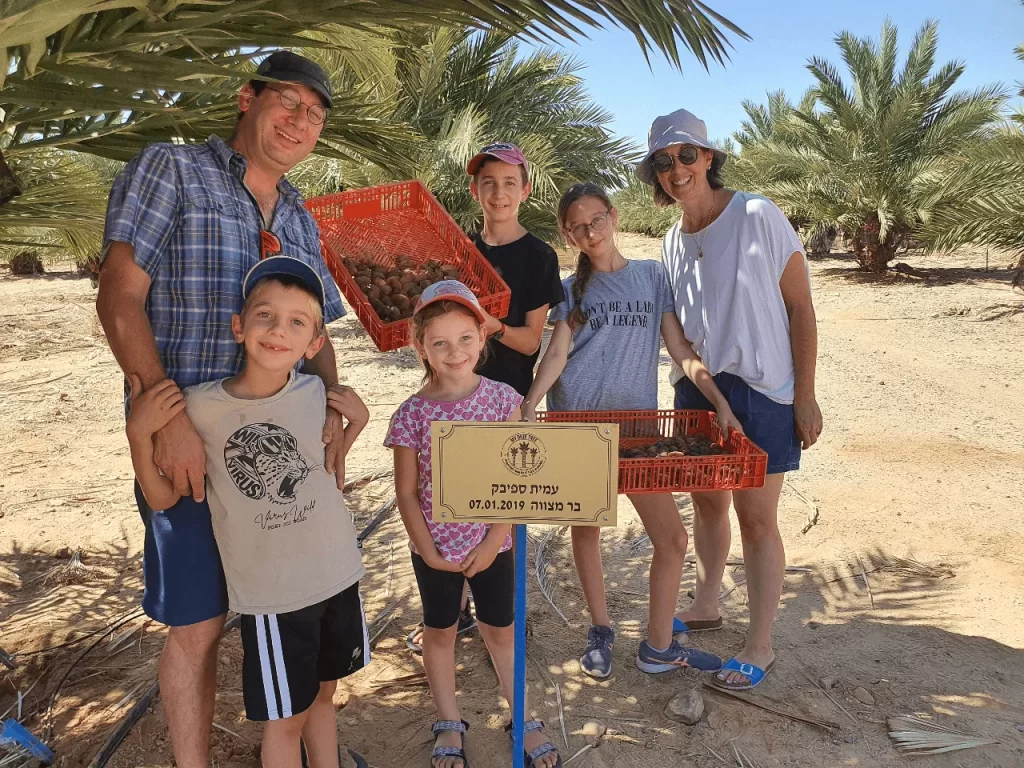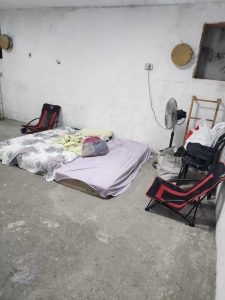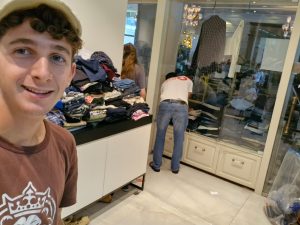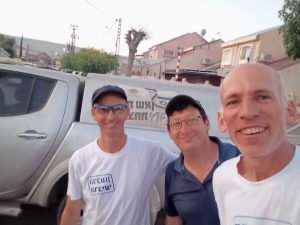Route 90 is a long road; some say the longest road in Israel, beginning all the way in the North, on the mountainous border of Israel and Lebanon, traversing the entire eastern side of our country, through the Jordan Rift Valley, along the Dead Sea, down the Arava desert, ending with a splash on the shores of the Red Sea in the far southern city of Eilat. It is not the length of this road that makes it special, but the journey you take on it. You see, few of us actually live along this road, rather we just use it to get somewhere, whether it be shot at a getaway from the kids in the form of a glass of wine on the porch of a romantic cabin on a Golan Heights cliff overlooking a tourist boat sailing the blue Sea of Galilee; or to spend hours at the pool and on the buffet line on a family vacation at one of the many all-inclusive hotels in Eilat. Some might even use this road to access a hiking trail or camping site somewhere along the way, or maybe they are looking for a supposedly ‘secret’ hidden spring in the desert. So you see, at the end of the day, we just use the road to get somewhere, and rarely do we pay attention to what is out there on the way. The driver just puts on the AC and levers in Cruise Control while all the others in the car will no doubt fall asleep listening to music that suddenly disappears every time we enter an area without reception.
As I already said, for most of us, Route 90 is a road, a drive; in Israeli terms a long drive, that gets us to where we need to go. But this road is not just a drive, it is a Journey. It is a journey into the eastern frontier of our country. It is a journey following Israel’s eastern border; and if you do not believe me, check out that border security fence just along the side of the road. Route 90 is a journey through mountains and deserts, through geological periods and tectonic shifts. It is a journey through ‘far away’ cities – those they call development towns; through Palestinian villages and Jewish agricultural villages (a Moshav or Kibbutz). Just like any route, – there are signs involved, along the way – or should I say, all along the Waze. Traffic signs, BEWARE signs – like the one warning about stray camels on the road, marketing signs, political signs, signs directing to nature reserve trails, and the best local pit stop (the one everyone knows you have to stop at). Many times, flocks of migrating birds will be flying above the car; WOW! These storks and pelicans are absolutely amazing! Once I could not help trying to look out the window while driving; let’s say that was not a good idea. Maybe one day we will see migrating birds appear on the Waze screen, like those street signs, so we would not have to look out at all.
It is during this journey on Route 90, Southbound, that my heart starts to beat hard and I get all excited. It is when Waze lets me know that I am almost there. Not at my destination; oh no – there is still is a long way for that, but rather that I’m nearing one of those friends I have gathered along the way over the years. Yes, friends along the way have become the highlight of many of my road trips, oftentimes more than the destination itself: friends, acquaintances, and individuals I have met over the years. Some are old-time friends from way back when school days; others are comrades from army service or university studies. Some through work, some by coincidence, and many — I guess it is just fate that brought us together. Yes, friends: individuals that leave an ever-lasting impression on my soul.
As I slow down to take the turn off Route 90 onto the narrow road leading to Moshav Paran in the central Arava Valley, a great smile climbs onto my face. Even before I make the turn, I recognize his white car waiting at the side of the road, and as I pull up, he already jumps out. I pull up behind his car, and before my car is comfortable in its parking mode, I am out, and we give each other a hug — one of those macho man hugs you learn to give in the scouts and in the army. I first met Aviram through one of relative’s relative connections. I was on Route 90 driving north, guiding a nice family of tourists, and suddenly remembered that a family member of mine had a brother who was living on Moshav Paran in the middle of the Arava, and was farming the desert growing dates and peppers. What a great people-to-people experience we could have a meeting with this fellow! A couple of phone calls and my relative’s relative told me he is not in the area today – but… he recommended we should meet Aviram, and so it came to be.
Aviram was happy to oblige, and as he introduces himself to my tourists, he makes them feel welcome. His Israeli Hebrew-accented English, fluent because of Anglo parents, – welcomes everyone with real joy. His eyes light up and he embraces the opportunity to meet new people and show them his whereabouts. He is young, not particularly tall, but possesses a solid body deeply tanned from the desert sun. He’s a farmer with a free spirit, sporting casual jeans, and T-shirts, resembling the many young and ambitious Israeli entrepreneurs who wander Tel Aviv’s Rothschild Boulevard full of ideas, and in search of partners and investors.
However, we are not in Tel Aviv, and we are reminded of that as the car climbs to a lookout point on top of a hill just above the intersection of Route 90 and the road leading to the Moshav. At the crest the hill we experience a breathtaking sight of the desert. Everybody jumps out for a look and we take cover from the sun under a metal shade and some KKL-JNF donor plaques. Below, the black asphalt of Route 90 cuts north-south through the desert, its asphalt baking in the scorching summer sun, creating a haze of heat that often gives drivers an allusion to the Wild West. To the east, the border with Jordan, and not far behind, in the background, rise the beautiful red mountains of Edom that hide inside them the ancient Nabatean city of Petra, and Mount Hor Hahar, known as the burial site of Moses’ older brother, Aaron. To the west, the wide dry riverbed of Wadi Paran gave its name to the little community that lies below us in its course. As we stand under the shade Aviram points out the homes of the ‘Moshavniks’, and the sun reflects back at us from within the valley. “There, that is where we live;” yet at first, we can’t see anything. As far as the eye can see, large white-colored hothouses tile the valley, hiding the homes of the Moshav within. “These hothouses”, Aviram explained, “are where we do magic. Inside we grow peppers, red peppers. You see, there,” he goes on, “the grove of trees in between the hothouses; those are mine: we decided to grow dates- let’s go see”.
Aviram grew up not far from here, on a Kibbutz further south near Eilat. After he married, and after a period of studying in the Tel Aviv area, he and his wife decided to join the Moshav, where she grew up. Here, they are raising a family and pioneering the land. As we stand at the edge of Aviram’s date plantation, his big fresh sweet Madjhul dates melting in our mouths, he explains the complicated process and sustained effort it took to plant the 500 trees. Obtaining and preparing the land, laying an irrigation system, digging the holes, planting the offshoots, careful watering, and then the long wait and anticipation for the first fruits. Aviram’s passion is so contagious that when you hear him say, “let’s go, you want to work a bit?” – you go. Before you know it, you are holding a big pair of pruning shears and trimming the trees in the manner he shows you, or dancing in a circle around a tree singing “U’shavtem Mayim Be’sason Mimainei Hayeshua”- “With joy, you shall draw water from the spring of Salvation”. Aviram brings us inside a humid hothouse full of growing red bell papers and gets us working a bit in the packing house. Every time I visit, as we drive in and out the Moshav, with homes around us, I wonder to myself what is the secret to the charm of this place. No doubt it is the people- even more than the view and the dates.
Not long ago, on a journey down Route 90 to Eilat with my wife, for one of those get-away attempts, we stopped for a visit with Aviram. What a joy, meeting friends. Of course, he took us down to see his trees; the dates were in season and we ate some of the tree — sweetness beyond imagination. On our way in, we stopped to see the new Studio built for his wife to teach Dance to the youngsters of the area. A beautiful sight. Together, this young couple is performing a sweet dance of life, a dance made up of true pioneering with a smile, somewhere along Route 90.
As a pioneer entrepreneur, Aviram has established ‘My Date Tree’- an agriculture crowdfunding project in which you can fund your own date tree in Israel. Aviram invites you to become a part of his date plantation, to observe your tree as it grows over the years, to visit your tree anytime you are on Route 90 to Eilat, to eat of its fruit — and to help the desert bloom.




